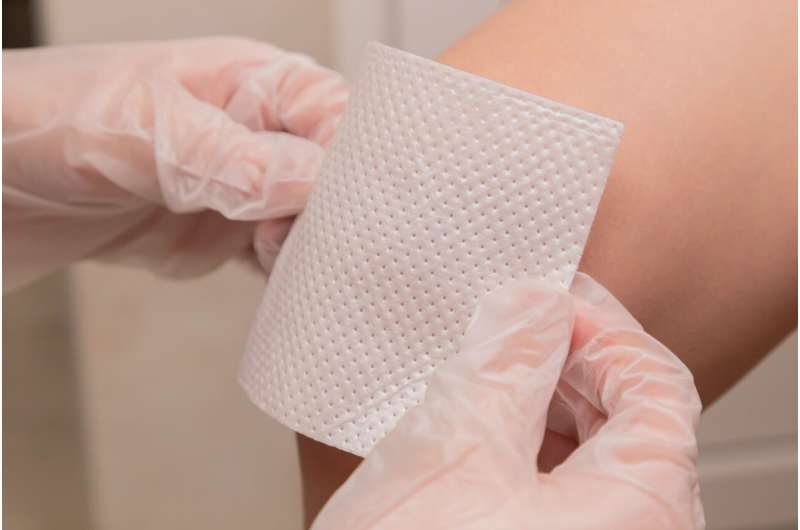Two decades of research lead to treatment for rare, painful skin condition

Table of Contents

Patients with severe dystrophic epidermolysis bullosa, or EB, have skin so fragile, the slightest touch can lead to blistering and, eventually, large, open wounds that never heal, causing immense pain.
A treatment developed at Stanford Medicine, skin grafts, can treat those large, open wounds. Genetically engineered from a patient’s own cells, the grafts were granted approval as an EB therapy on April 29 by the U.S. Food and Drug Administration.
“I’m super excited,” Jean Tang, MD, Ph.D., professor of dermatology said, noting that the grafts are the product of more than 20 years of Stanford Medicine research. Tang treats children with EB at Lucile Packard Children’s Hospital Stanford. “Who would have thought that an experiment in a Stanford lab would lead to a personalized therapy for EB patients?”
We spoke with Tang about the disease, the research that led to the treatment and hope for patients with the condition.
What is dystrophic epidermolysis bullosa?
Severe dystrophic epidermolysis bullosa is a rare genetic condition affecting 1 in every 500,000 people. Those with the disease have a defect in the gene for collagen VII, a protein that normally holds the skin together.
Collagen VII is like a staple that attaches the top layer to the bottom layer of your skin. Without this molecular “staple,” the layers of patients’ skin separate in response to slight friction, even a light touch. This causes wounds that can persist for years, along with extreme pain and itching.
These kids are wrapped in wound dressings almost from head to toe, just to protect their delicate skin. They’re known as butterfly-skin children because their skin is as fragile as butterfly wings.
The wounds are prone to infection, and even bathing is painful. Because of the unhealed wounds and inflammation, EB patients are at high risk for skin cancer.
Other parts of the body are also affected, as collagen VII helps hold layers of the digestive tract and eye together, but the skin problems are the most difficult aspect of the disease to live with.
Describe the research that has led to the skin grafts receiving approval by the FDA.
In 2003, Paul Khavari, MD, Ph.D., the Carl J. Herzog Professorship in Dermatology in the School of Medicine, and his team developed a safe and effective way to genetically engineer EB skin cells with a corrected gene. The team showed that the resulting skin could be grown into small sheets that had functional collagen VII and could be safely grafted to mice.
This work led, over the next two decades, to Stanford Medicine studies that developed gene therapy skin grafts for people, including a phase 1 clinical trial led by Alfred Lane, MD, now emeritus professor of dermatology, and Peter Marinkovich, MD, associate professor of dermatology, which showed early signs of safety and effectiveness of the gene-therapy grafts and was published in 2016.
Our team also played a leading role in the last phase of clinical trials, with results that we are looking forward to sharing when they are published.
The treatment was then licensed from Stanford University by Abeona Therapeutics Inc., which will manufacture grafts for patients. The grafts will be available at five hospitals across the country, including Packard Children’s.
How do the grafts work?
To make the skin sheets, which are grown individually for each patient, a physician collects a small biopsy of the patient’s un-wounded skin. The biopsy is taken to a lab, where a retrovirus is used to introduce a corrected version of the collagen VII gene, COL7AI, to the skin cells. The genetically engineered cells are grown into sheets of skin that are about the size of a credit card. The process of preparing the grafts takes about 25 days, after which patients go to the hospital and our plastic surgeons suture the genetically engineered skin onto a wound.
Patients stay in the hospital for about a week of recovery. Because each graft is created from the patient’s own skin, the treatment provides healthy skin that matches the patients’ own immune markers, preventing immune rejection of the grafts.
What are people saying about the grafts?
Participants in our clinical trials have told me just how much of their life and attention span had been focused on these painful wounds. To not have that is very freeing. Their wounds stay healed, and they don’t have to wear as many bandages. They can attend school and do other everyday activities more easily.
If these patients are diagnosed as infants and start another gene therapy product, a gene therapy gel that was approved in 2023, maybe they won’t develop big wounds. But if the gels don’t work and a wound does expand, the skin graft therapy is the right treatment. The arc of their disease will, I hope, be modified, with less suffering.
Citation:
Q&A: Two decades of research lead to treatment for rare, painful skin condition (2025, May 3)
retrieved 3 May 2025
from https://medicalxpress.com/news/2025-05-qa-decades-treatment-rare-painful.html
This document is subject to copyright. Apart from any fair dealing for the purpose of private study or research, no
part may be reproduced without the written permission. The content is provided for information purposes only.
If you liked the article, do not forget to share it with your friends. Follow us on Google News too, click on the star and choose us from your favorites.
If you want to read more Like this articles, you can visit our Science category.



